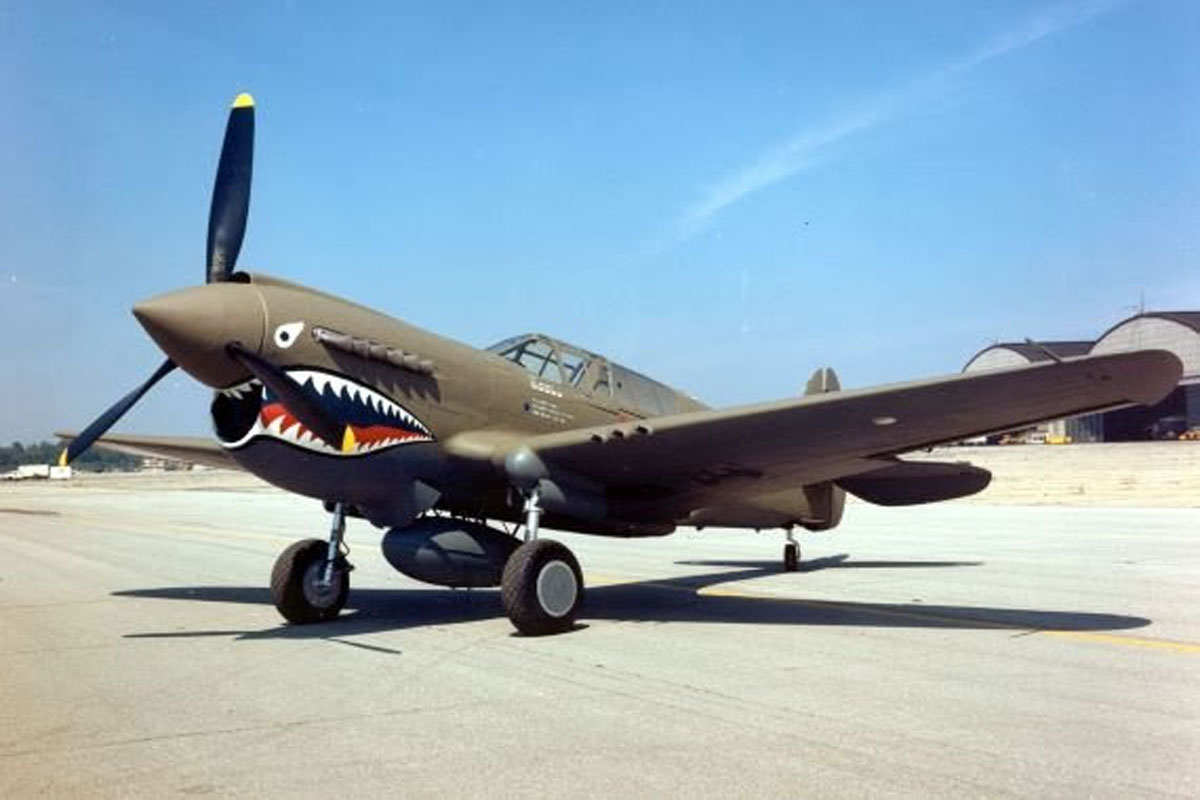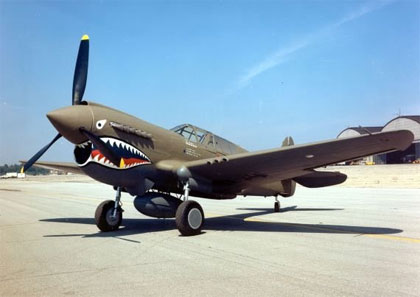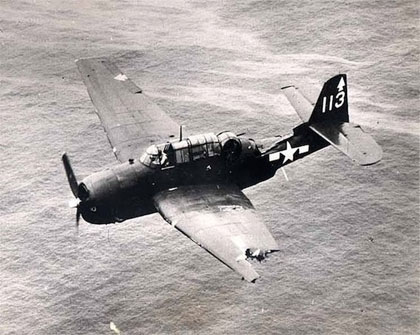
The Strange World War II Legend of the Ghost Fighter of Pearl Harbor
Brent Swancer October 6, 2021
Throughout wartime there have been mysterious stories that have slipped through the cracks to go on and provoke speculation and talk, sometimes blurring the line between possible fact and fantasy. At 7:48 a.m. on December 7, 1941, the naval base at Pearl Harbor in Honolulu would be subject to a brutal surprise attack that would drag the United States into World War II and change the world forever. On this day, a force of by 353 Imperial Japanese aircraft, backed up by ships and submarines, pummeled the unprepared base in an unprovoked, unannounced attack of such ferocity that it would leave 188 U.S. aircraft destroyed, 12 vessels sunk, 2,403 Americans dead, and 1,178 others wounded in what then President Franklin D. Roosevelt would call “a date which will live in infamy.” A year later the base was still reeling from what had happened, and this was when a weird mystery would surface that has gone on to generate much discussion and debate, involving a strange ghost fighter with a vanishing pilot.
According to the story, on December 8, 1942, an unidentified incoming plane was detected on radar flying aimlessly towards Pearl Harbor, Hawaii, from out over the Pacific Ocean from the direction of Japan, seemingly coming from nowhere. Attempts at radio contact were met with silence, and warplanes were scrambled to investigate the intruder, anticipating that another attack was incoming. When two warplanes approached the mystery plane, they found that it was an American Curtiss P-40 Warhawk. The mystery aircraft seemed to have seen better days, its shell perforated by numerous bullet holes, and the engine sputtering and coughing noticeably, and there seemed to be a pilot within who was bloody and struggling to keep his plane under control. Where had it come from and why was the out-of-date plane flying around out there? No one knew.
 Curtiss P-40 Warhawk
Curtiss P-40 Warhawk
The military escort paced the plane for a while, baffled as to where it had come from and wondering what to do, and that was when the pilot of the plane would reportedly wave and smile at them before going into a nosedive. The plane would plummet to the ground to go crashing to earth in a ball of fire and rescue crews were sent out immediately to find some very strange things. When the wreckage was examined, it is said that there was no sign of the pilot that had been seen, and the only clue that could be found was a diary in which it was written that the plane had flown in from the island of Mindanao, a full 1,300 miles away. It was also found that the landing gear was missing, apparently completely blown off in battle, and that the plane had likely been in no condition to fly very far in the first place, let alone from 1,300 miles away. Where had it come from and where had it been? How had it managed to operate in such a dire condition and without landing gear? Who was the mysterious pilot that the American fighter pilots insisted they saw? These were questions with no answers.
That is the supposed story of the “Ghost Fighter of Pearl Harbor,” and it gained a lot of attention as a genuine World War II mystery, with all sorts of theories and ideas flying about, such as that this had been a POW who had managed to escape in a cobbled together makeshift plane, or that he had even been an actual ghost. Over the years it would be told and retold in various publications, but it seems that likely none of this had ever happened at all. The first red flag is a lack of any news report from the time of such an event taking place, but it gets even more damning when we look at the writings of a World War II fighter ace by the name of Colonel Robert Lee Scott, Jr., commander of the Flying Tigers, the 23rd Fighter Group.
 Scott was a legend in his time, a true P-40 fighter ace, and wrote of his adventures on numerous occasions, his most famous book being his 1943 autobiography God Is My Co-Pilot, which would be made into a Hollywood film of the same name in 1945. Also in 1945, Scott released a book called Damned to Glory, which rather than autobiographical accounts and memoirs was a collection of pieces of short fiction based on his experiences and what he had seen in battle. One story within its pages is titled Ghost Pilot, and is a nearly beat for beat mirror of the account of the tale of the Pearl Harbor Ghost Fighter, only set at Kienow Airdrome in China. The sudden appearance of the plane, the missing pilot and landing gear, they all perfectly match, and it is thought that this story was picked up and taken as a factual account. Scott would later express bafflement as to how his fictional story had been picked up and taken as fact, but it had already taken on a life of its own. Brian Dunning, of the site Skeptoid, has said of the evolution of the tale:
Scott was a legend in his time, a true P-40 fighter ace, and wrote of his adventures on numerous occasions, his most famous book being his 1943 autobiography God Is My Co-Pilot, which would be made into a Hollywood film of the same name in 1945. Also in 1945, Scott released a book called Damned to Glory, which rather than autobiographical accounts and memoirs was a collection of pieces of short fiction based on his experiences and what he had seen in battle. One story within its pages is titled Ghost Pilot, and is a nearly beat for beat mirror of the account of the tale of the Pearl Harbor Ghost Fighter, only set at Kienow Airdrome in China. The sudden appearance of the plane, the missing pilot and landing gear, they all perfectly match, and it is thought that this story was picked up and taken as a factual account. Scott would later express bafflement as to how his fictional story had been picked up and taken as fact, but it had already taken on a life of its own. Brian Dunning, of the site Skeptoid, has said of the evolution of the tale:
But did Scott intend for “Ghost Pilot” to be taken as a true story? Well, it certainly took on a life of its own. Reader’s Digest reprinted “Ghost Pilot” almost immediately, thereby immortalizing it in a mass market publication. Author and Flying Tigers historian Dan Ford tracked some of the history and found that Scott retold the story again in a Boston magazine called Yankee, only this time he made its hero a Boston native. Ford also found an online account written by a Dave Kight, who said he attended a live event where General Scott was asked about the story in an open Q&A forum. Kight wrote:
“Someone asked him about this very story of the Mindanao P-40. He laughed and said he and another Flying Tiger pilot made it up as a lark during the war. They later admitted it was a joke but the thing refused to die. He said they were stunned to see the thing in print in an issue of Air Classics and if they had any idea that it would be still around 40 some odd yrs. later (at the time) they wouldn’t have done it.”
Imagine that: an urban legend found on the Internet, that turns out to be the fictional work of an imaginative author. Told, retold, copied, pasted, abridged, and distorted, it finds it way onto the “unexplained mystery” websites, where it is taken seriously by many readers. Why the misattribution as a genuine mystery? It’s not like there aren’t enough real mysteries; but perhaps more to the point, why not let it stand as a work of fiction?
It certainly seems to be a sort of urban legend that has sprung up in the fog of war. Indeed, the battles of World War II seem to be a perfect breeding ground for strange tales, and this case is no different. The fact that a fictional tale could so thoroughly worm its way into the annals of wartime unsolved mysteries seem intriguing, yet it goes to show that such times can spawn strange unsolved mysteries that take on a complete life of their own.
MU*




















